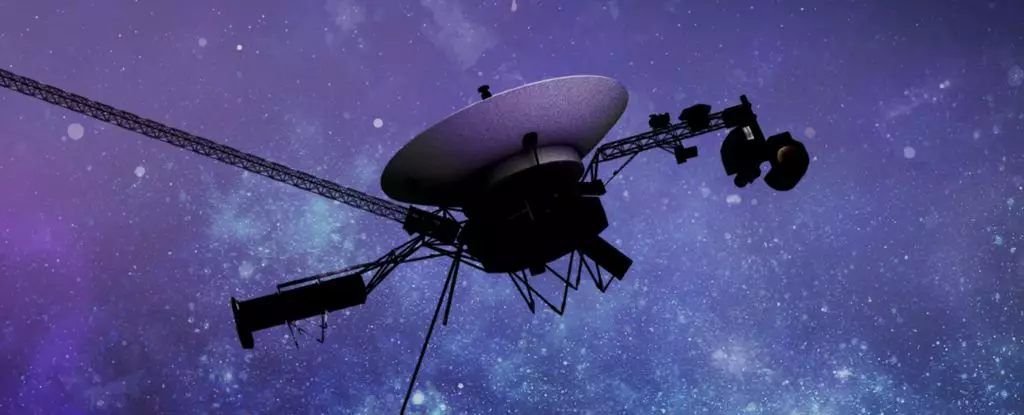The deep space radio network is once again resonating with the familiar sounds of Voyager 1, 24 billion kilometers away from Earth. After a period of transmitting garbled data, NASA scientists are thrilled to announce the spacecraft’s return to normal science operations. All four instruments onboard, which study plasma waves, magnetic fields, and particles, are now providing valuable scientific data.
In November 2023, Voyager 1 experienced a sudden malfunction, resulting in the transmission of incomprehensible readings back to Earth. The root cause was traced back to a corrupted chip in the probe’s memory system, potentially due to its aging technology or exposure to energetic particles in interstellar space. NASA engineers resorted to consulting outdated manuals from the 1970s to address the issue.
After meticulous efforts, the team at NASA successfully managed to retrieve readable data from two of the four scientific instruments aboard Voyager 1. The process was likened to resetting electronics after a power outage, highlighting the intricate work involved in restoring communication with the distant probe. Now, all four instruments are operational once again, enabling the spacecraft to continue its exploration of the outer reaches of our Solar System.
Voyager 1 and its twin, Voyager 2, represent humanity’s pioneering mission into uncharted territory beyond our Solar System’s heliopause. These spacecraft serve as vital tools for scientists to study the interstellar medium, offering insights into the structure and extent of our Sun’s influence. While often misconstrued as having left the Solar System, the Voyagers have yet to reach the speculated Oort cloud, marking the outer boundary of our cosmic neighborhood.
Despite their remarkable longevity, both Voyager probes face inevitable power depletion, limiting their operational capabilities. Voyager 1 is projected to take centuries to reach the Oort cloud, and even longer to traverse it entirely. Engineers anticipate at least one instrument will remain functional until 2025, with communication potentially continuing until 2036. However, the probe’s deteriorating condition poses uncertainties regarding its long-term performance.
Over the years, Voyager 1 has encountered various technical setbacks, including a malfunctioning computer and aging components. Despite these challenges, NASA remains dedicated to preserving the spacecraft’s mission. Efforts are underway to address maintenance issues, such as the digital tape recorder, crucial for storing essential data. As we reflect on Voyager 1’s enduring journey through space, we are reminded of the resilience required to navigate the complexities of deep space exploration.
By overcoming obstacles and embracing advancements in space technology, Voyager 1 continues to inspire future generations with its remarkable odyssey through the cosmos. As we celebrate its recent revival and anticipate the discoveries yet to come, we are reminded of the enduring spirit of human exploration that propels us further into the unknown depths of the universe.


Leave a Reply